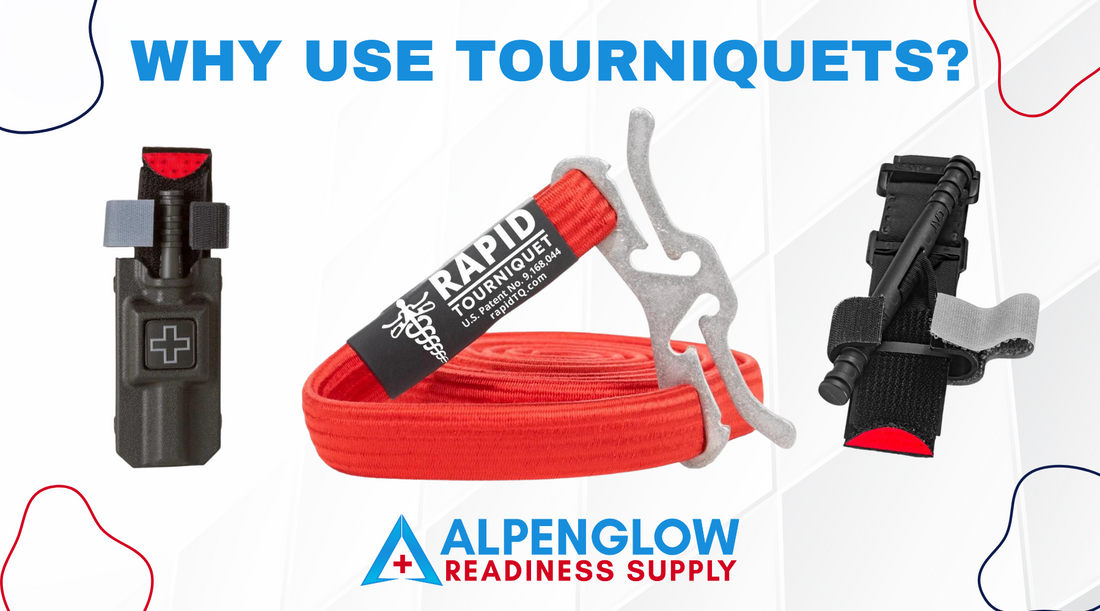
What is a tourniquet and why are they important?
Share
When it comes to emergency situations, time is of the essence. Whether you're hiking in the wilderness, driving on a rural road, or in any other potentially dangerous scenario, accidents can happen and injuries can occur. One of the most important things you can do to prepare for such situations is to pack a tourniquet in your emergency kit. In this blog post, we'll explore what tourniquets are, why they're important, and how to use them effectively.
What is a Tourniquet?
A tourniquet is a medical device used to stop severe bleeding in an extremity (e.g., an arm or a leg). It works by compressing the blood vessels in the affected area, which reduces or stops blood flow. Tourniquets can be made from a variety of materials, including cloth, elastic, and plastic, but the most effective tourniquets are those designed specifically for medical use.
Why are Tourniquets Important?
Tourniquets can be lifesaving in situations where severe bleeding is present. If a person is bleeding heavily from an extremity and the bleeding can't be controlled with direct pressure, a tourniquet may be necessary to stop the bleeding and prevent the person from going into shock or losing too much blood. Tourniquets can also be used to prevent the spread of toxins or venom in snake or insect bites, as well as for veterinary purposes.
Tourniquets have been used in emergency medicine for centuries, and they've saved countless lives in both military and civilian settings. However, there was a period of time when tourniquets fell out of favor due to concerns about limb damage and other complications. In recent years, however, medical professionals have come to recognize the value of tourniquets as a critical tool for controlling severe bleeding. As a result, tourniquets have become an essential part of first-aid kits and emergency preparedness plans.
How to Use a Tourniquet
If you find yourself in a situation where you need to use a tourniquet, it's important to act quickly but also carefully. Here are the basic steps for using a tourniquet:
- Apply the tourniquet as close to the wound as possible, ideally 2-3 inches above the wound.
- Tighten the tourniquet until the bleeding stops. You should be able to feel a pulse in the affected limb before tightening the tourniquet, but you won't be able to feel the pulse once the tourniquet is applied correctly.
- Secure the tourniquet in place with the strap or buckle provided.
- Make a note of the time the tourniquet was applied, and seek medical attention as soon as possible.
It's important to remember that tourniquets are a last resort for controlling severe bleeding. In most cases, direct pressure, elevation, and the application of a bandage or dressing will be sufficient to stop bleeding. However, if these measures aren't effective, a tourniquet may be necessary.
Conclusion
In an emergency situation, having a tourniquet on hand can mean the difference between life and death. Although they should only be used as a last resort, tourniquets are an essential tool for controlling severe bleeding and preventing the loss of limb or life. If you're planning a trip into the wilderness or preparing an emergency kit for your home or car, be sure to include a tourniquet and learn how to use it effectively.
Get your tourniquet and more at alpenglowsupplyak.com
#EmergencyPreparednessAlaska
